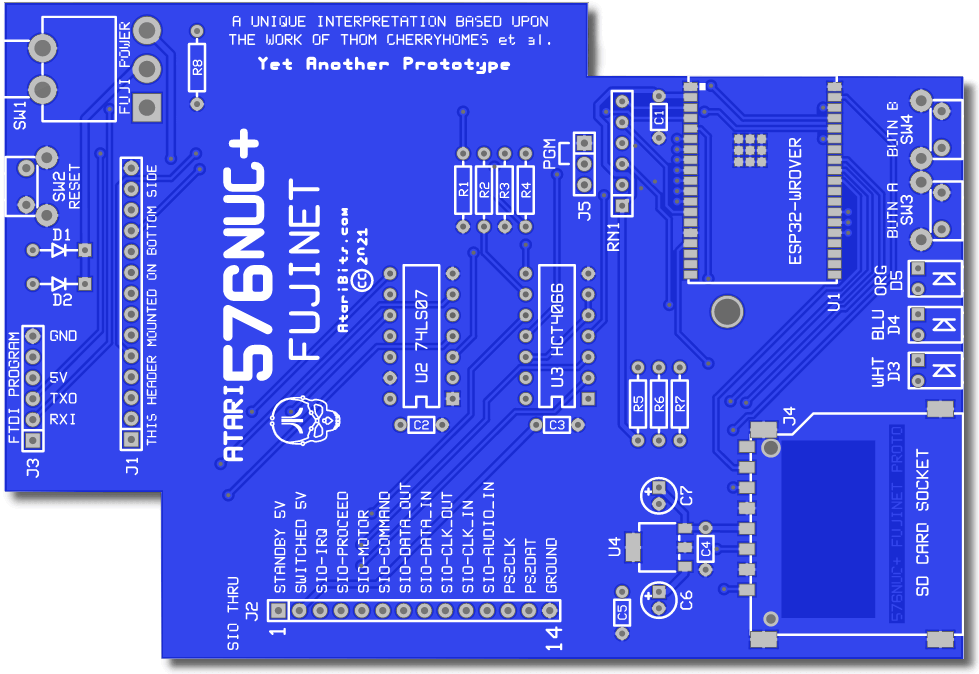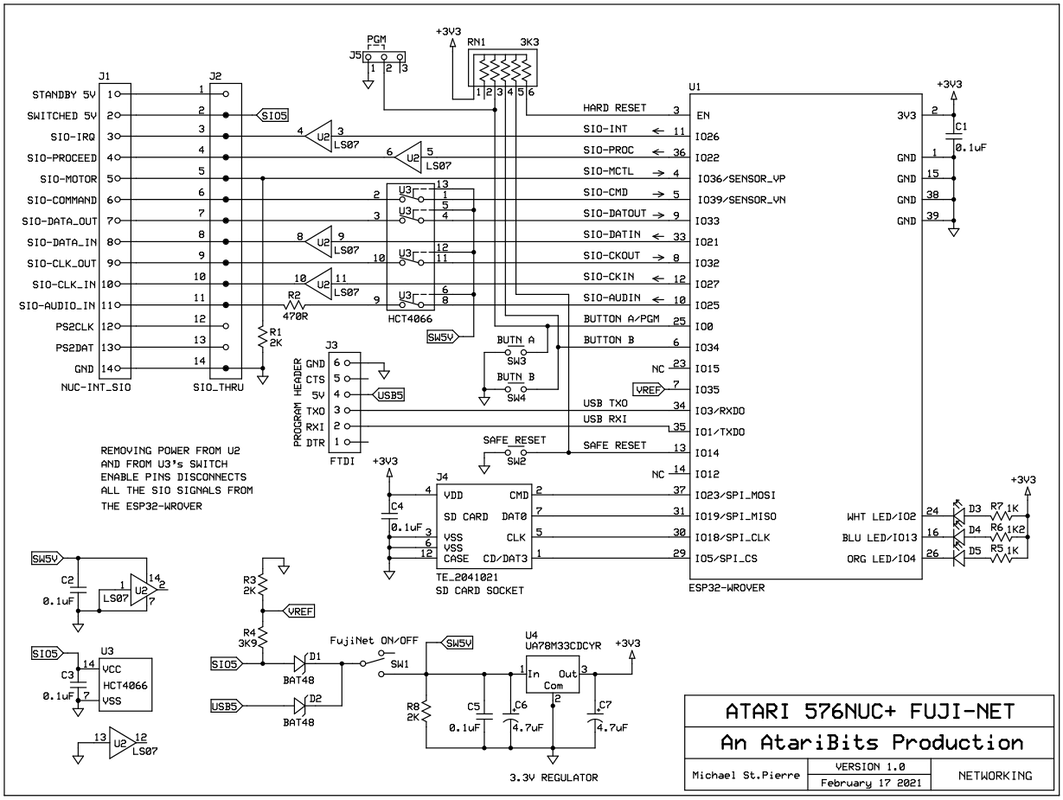Why the odd shape and the bigger than needed board?
This board was patterned after the previous board designed by Mr Robot that is meant to drop into the 576NUC+, lining up the switches, LEDs and such with the front and rear panels of the custom NUC enclosures he's designed. Mimicking that previous board footprint insured that it could be used in a similar enclosure if so desired, and gave me lots of room to layout the chips and traces for a very easy routing of the PCB.
| nuc-fujinet_proto_schema.pdf |
Wherever possible, thru-hole components were implemented, making for a more DIY friendly assembly. Exceptions: the WROVER solderable module was retained instead of opting for a break-out version, since a few of us beta testers already had these on hand. And the SMT SD socket was also kept, although it's relatively easy to solder. Finally because there wasn't an appropriate thru-hole replacement for the USB Serial Bridge chip (CP2102N-QFN24), I opted to go with an external FTDI (USB to Serial) cable connection to facilitate WROVER programming. An even cheaper option for this cable is to be found in the PL2303TA based cables that sell for very cheap on eBay, essentially rendering a similar USB to Serial function, assuming the Prolific driver is installed (already present in most Linux distributions).
As I write this blog entry, sample boards are currently being manufactured by JLCPCB in China, and should be arriving late next week. When that happens, one board will get assembled and tested with the hopes that the new ideas it encompasses will actually work as proposed. Whatever is learned will then be applied to a final version of Mr Robot's FujiNet board.
Exciting times ahead,
- Michael



 RSS Feed
RSS Feed
